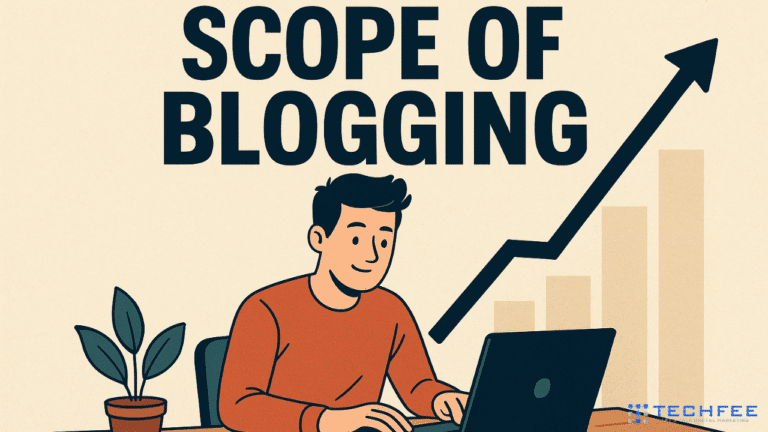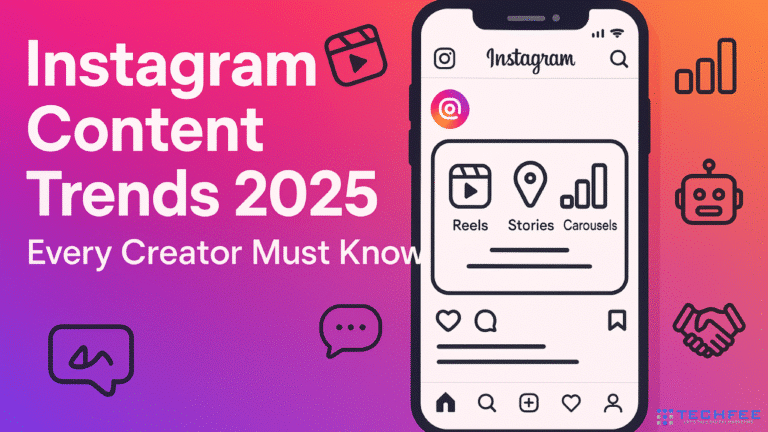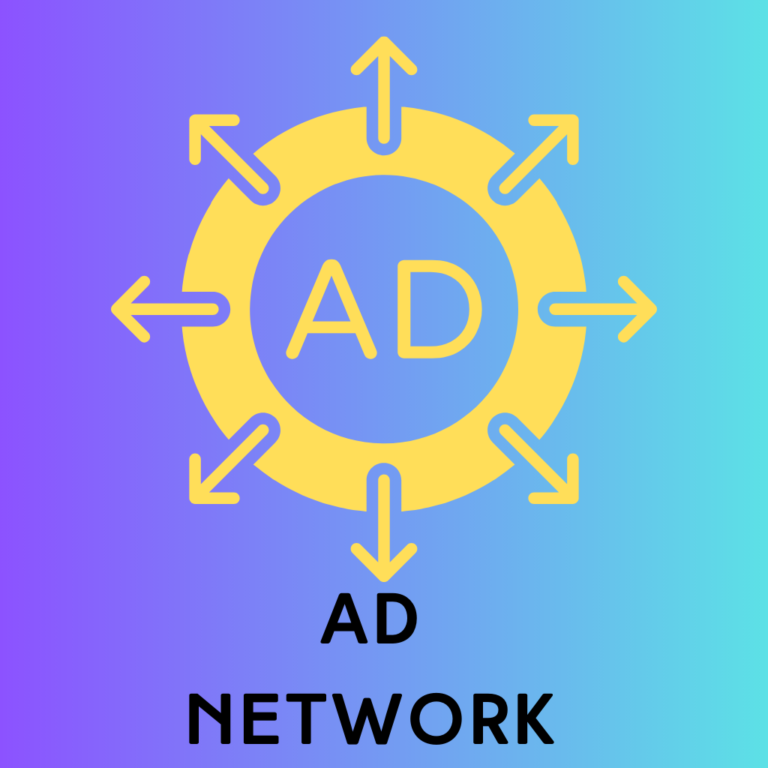Have you ever wondered why the best free digital marketing tools will be a lifesaver for serious marketers in 2026?...
Read MoreActionable Digital Marketing Insights for Bloggers, Freelancers & Small Businesses
Learn SEO, blogging, marketing tools, and growth strategies based on real-world experience with Techfee — not just theory.
Welcome to Techfee!
Let's Talk Digital Marketing And Unlock the Power of Digital Marketing Excellence.
At Techfee, we are dedicated to empowering you with the latest insights and strategies in digital marketing.
Whether you’re diving into SEO to boost your website’s visibility, harnessing the potential of social media for brand engagement, or mastering the art of blogging and affiliate marketing, we’ve got you covered.
Our mission is to be your go-to resource for actionable tips, expert advice, and practical tutorials that fuel your success in the digital landscape.
Join the list of marketers, entrepreneurs, and bloggers who trust Techfee for cutting-edge techniques and proven tactics.
Ready to elevate your digital presence? Explore our comprehensive guides, stay updated with industry trends, and transform your online strategies with us.
Transform your digital journey today. Let’s achieve greatness together.
What You’ll Learn on Techfee
Techfee is a digital marketing blog built for people who want practical growth, not generic advice.
SEO & Website Optimization
Learn how search engines work, how to fix technical issues, and how to rank content sustainably.
Blogging & Affiliate Marketing
From content strategy to monetization — real insights from building and running niche websites.
Marketing Tools & Software
Honest reviews, comparisons, and tutorials of tools I personally test and use.
Freelancing & Marketing Careers
Guides for freelancers, consultants, and marketers looking to build long-term income online.
My Recent Articles
Hostinger Black Friday Sale 2025 – Don’t Miss This Year Offer
Hostinger Black Friday is live! 🎉 If you’ve been waiting for the perfect moment to buy web hosting, start your blog,...
Read MoreInstaDoodle Review 2025: Create Stunning Whiteboard Animation Videos in 3 Clicks (No Tech Skills Needed!)
Ever Had a Brilliant Idea That Nobody Paid Attention To? Let’s be honest. You’ve poured your heart into your content...
Read MoreThe Top 13 Video Submission Platforms That Will Take Your Brand to the Next Level
As video content continues to dominate the digital world, brands need to take advantage of video submission platforms to reach wider audiences....
Read More12 Game-Changing Video Marketing Trends to Dominate in 2025 and Beyond
Video marketing trends are rapidly reshaping how brands connect with their audiences, and from 2025 is set to bring even...
Read More16 Video Marketing Strategies to Make Your Content Go Viral Forever
Are you looking for creative ways to make your videos go viral forever? Incorporating Video Marketing Strategies in your business...
Read MoreHow to Create Content That Converts: Proven Steps for Growth
Have you ever wondered how to create content that converts — content that doesn’t just attract clicks, but actually drives...
Read More7 Effortless Trends You Must Know About Scope of Blogging
Blogging is a versatile platform for sharing ideas and opinions, yet its full potential should be considered. For example, writing...
Read MoreHow to Download Videos from Pinterest (Step-by-Step Guide for 2025)
If you’ve ever wondered how to download videos from Pinterest without the headache, you’re not alone. Pinterest is a goldmine...
Read MoreCreate Eye-Catching YouTube Thumbnails: Proven Design Tips for 2025
If you’ve ever wondered how to make eye-catching thumbnails for YouTube that get clicks, you’re not alone. Okay, let’s put...
Read MoreHow to Become a Full-Time Content Creator This Year and Build Your Brand
Subscribe to Our Email NewsletterPlease enable JavaScript in your browser to complete this form.Email *Comment Subscribe Do you also dream...
Read MoreUnlock Instagram Content Trends 2025 Every Creator Must Know
Subscribe to Our Email NewsletterPlease enable JavaScript in your browser to complete this form.Email *Comment Subscribe If you’re still posting...
Read MoreHow to Get Expired Domains with Backlinks and Traffic in 2025: Complete Guide to Purchasing High‑Authority Expired Domains
Just imagine waking up tomorrow with a website that already has backlinks from major publishers, a stream of visitors, and...
Read MoreStart Your YouTube Career in 2025: Step by Step Guide
Let’s learn today how to become a YouTuber in 2025, even if you’re just starting out. Explore practical advice, effective...
Read MoreBest Blogging Platforms for Writers, Creators, Marketers & Making Money
Want to turn your passion into profit, share your voice with the world, or grow a personal brand that stands...
Read MoreHostinger Review 2025: My Honest Take on Performance, Pros & Cons
Why 2025 Is the Perfect Time to Start with Hostinger: If you’re beginning, I’ll be sharing my comprehensive feedback and...
Read MoreExplore the World of Digital Marketing
Browse the latest updates and insights in the ever-evolving world of digital marketing. Stay connected with us to get exclusive access to cutting-edge trends and proven strategies across various domains of digital marketing:
Digital Marketing Resources
You have landed at the right place for all digital marketing essentials, tools, eBooks, and resources packed with practical marketing strategies written by professionals.
Latest From The Digital Marketing News

It makes me happy to bring you helpful information and in-depth study in our Digital Marketing News section. You’re about to enter the fascinating world of marketing strategies, digital ads, and the latest digital technology news.
Keep up with the latest news and trends by reading in-depth reports and conducting in-depth studies on the industry designed specifically for advertisers and brand marketers.
This carefully chosen information collection will allow you to make wise choices and stay ahead in the fast-paced world of technology and digital marketing.

Microsoft has revolutionized the search process with its revolutionary ChatGPT powered Bing, making it attractive again!!!
Kevin Roose is a technology columnist for The New York Times, based in the Bay Area. He says, I remember when I first utilized Google. I was a geeky, web-fixated juvenile. For quite a long time a while later, I was unable to quit enlightening my companions and family members regarding the excellent new web

Introducing BARD: Google’s Latest Breakthrough in AI Technology
Google CEO Sundar Pichai recently announced that a new AI-driven writing assistant, Bard, will be available to selected testers in advance of its public launch later this year. With the promise of greater efficiency and creativity offered by cutting-edge machine learning technology, we anticipate eager anticipation for what Google has planned with its latest tool.

Ripple Achieves Significant Victory in SEC Lawsuit Involving XRP Cryptocurrency
Landmark Legal Victory for Ripple as U.S. Judge Rules in Favor of XRP Cryptocurrency In a significant development for the cryptocurrency industry, Ripple Labs Inc has been deemed not to have violated federal securities law by selling its XRP token on public exchanges. The ruling, delivered by a U.S. judge on Thursday, resulted in a
Unlock Your Online Earning Potential
Digital marketing is constantly changing, and 2024 has excellent chances to make money. Read insightful pieces and game-changing strategies to find different ways to make money online. Do it now to learn how to be successful in today’s exciting digital world.
Deals and Coupons for Digital Marketing Enthusiasts
Use our hand-picked deals and coupons to save a ton of money! As a blogger who only writes about digital marketing, I’m delighted to work with top brands to give you special deals on the business’s best marketing products and services. To find the best deals on cutting-edge tools, special services, or necessary resources, visit our deals page.
Check out a bunch of deals that are designed to help you do better in digital marketing. Take advantage of these limited-time deals to help you be more productive and improve your business. Visit now and take advantage of these great deals to enhance digital marketing!
Get My Free SEO Checklist
A simple, actionable SEO checklist to help you:
- Fix common SEO mistakes
- Improve visibility
- Build a strong foundation for long-term growth

MEET THE PERSON BEHIND TECHFEE
Hi, I’m Md Afraz Alam, a digital marketing professional and blogger.
I started Techfee to share honest, experience-based insights on SEO, blogging, tools, and digital growth.
After working on my own projects and helping businesses improve their online presence, I realized one thing — most people struggle not because of lack of effort, but because of lack of clarity.
Techfee is my way of simplifying digital marketing so creators and businesses can grow with confidence.
👉 Need professional help? Explore my digital marketing services
If you’re looking for personalized support — whether it’s SEO, content strategy, or digital marketing consulting — I also work directly with clients.
Join Our Facebook Community - The Digital Growth Society
“A vibrant Facebook group where passionate minds connect, collaborate, and share insights to fuel growth in the ever-evolving world of digital marketing.”






























